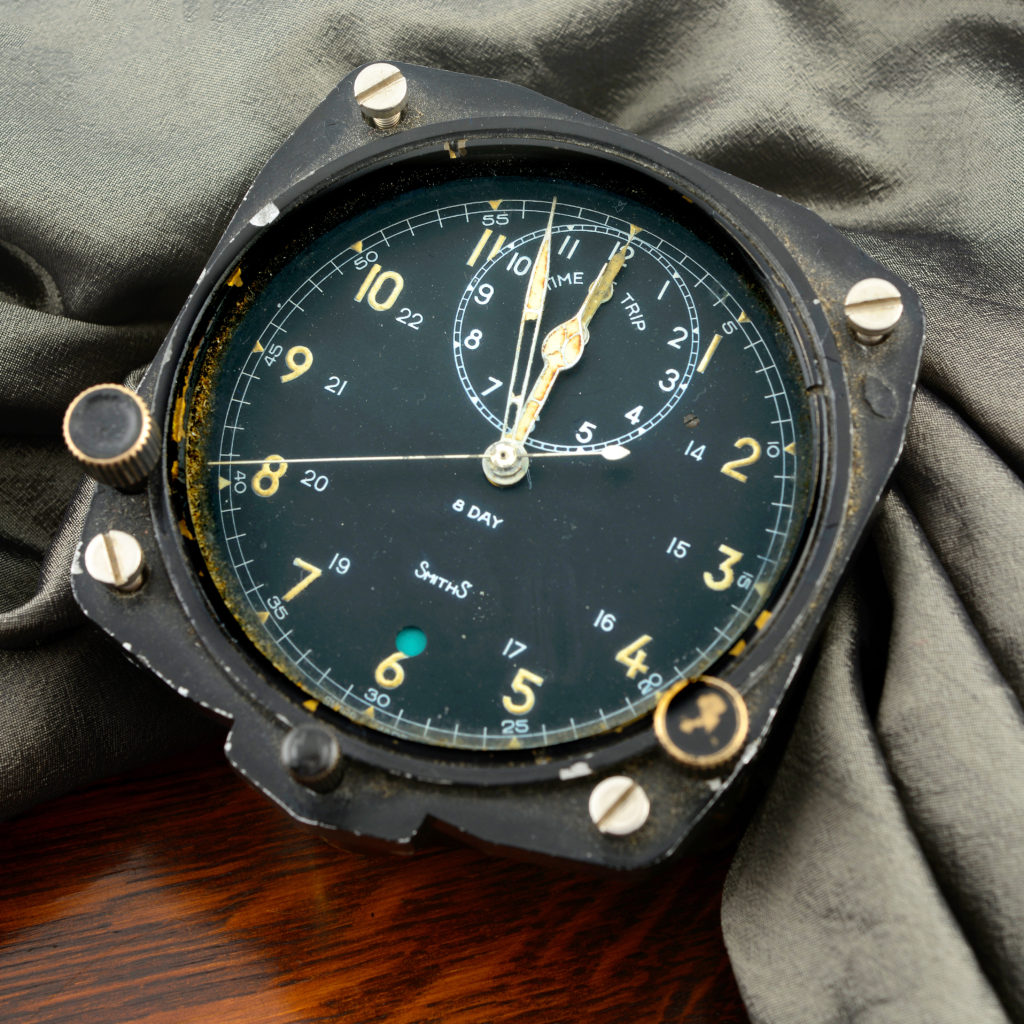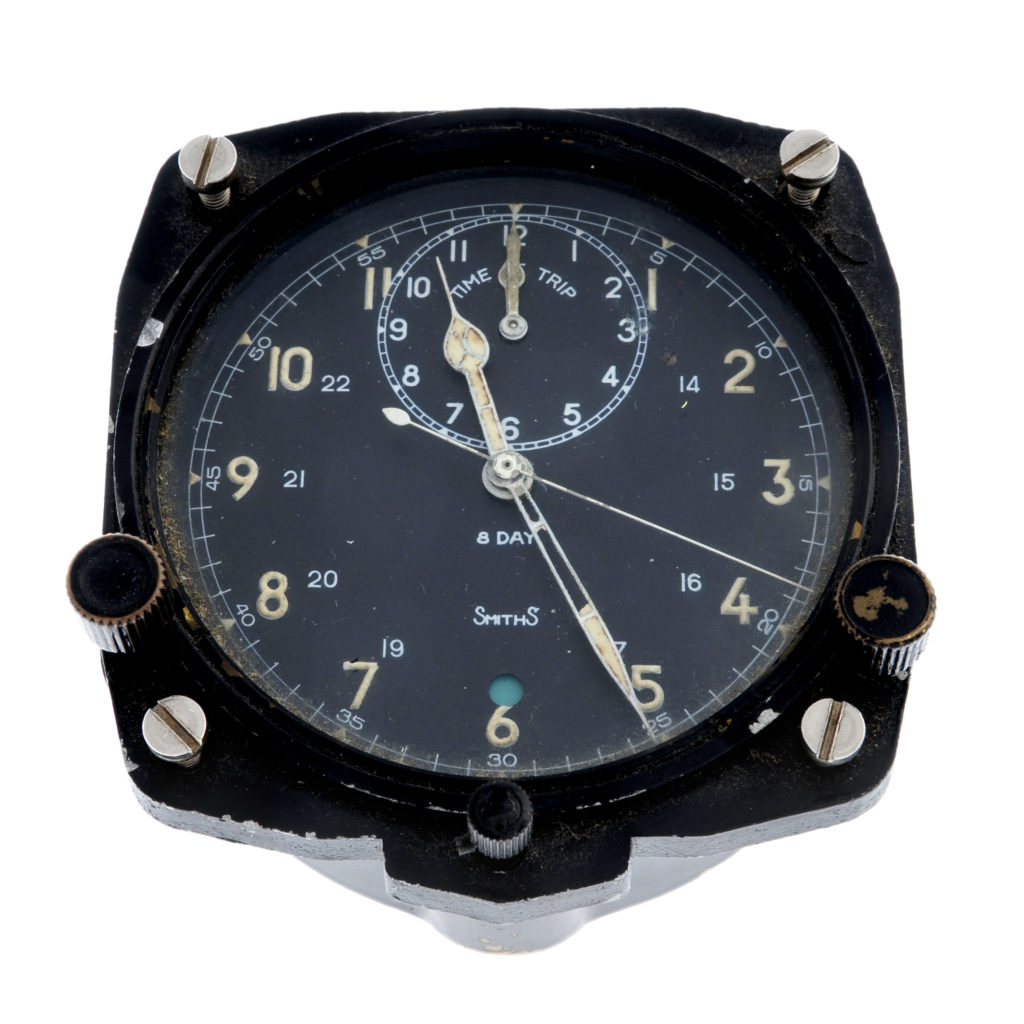Cockpit clocks were the answer to some very specific issues in the aviation industry. They provide accurate timekeeping for a variety of purposes, including navigation, coordination, and safety.
Cockpit clocks: a brief history

In the early days of aviation, cockpit clocks were relatively simple and often resembled pocket watches. Pilots used these clocks primarily for basic timekeeping to gauge flight duration, earning them the name ‘Time of Trip’ dashboard clocks. The first of these very specific clocks were produced by Heuer in 1910. It is interesting to see how timekeeping has evolved suit the needs of the changing world. Oftentimes such innovations have come from times of conflict. If this interests you, see our talk on the history of military watches which shows how close to pocket watches the early trench watches were.
Early 20th Century
During World War I, aircraft became more sophisticated. The need for accurate timekeeping became more critical. Pilots relied on clocks for navigation and coordination in combat. Time was a crucial factor in mission planning and coordination among squadrons.
With the expansion of commercial aviation in the 1920s and 1930s, cockpit clocks became more advanced and reliable. Navigational accuracy was essential for long-distance flights, and pilots used chronometers to calculate their position using celestial navigation methods.
The importance of cockpit clocks became further emphasized during World War II. Aviators used them for timing bombing runs, coordinating formations, and ensuring precise timing in various combat scenarios. The development of more accurate timepieces, such as chronometers and chronographs, was critical during this period. Before and during the Second World War, the Air Ministry sourced many of their aviation clocks from S.Smiths & Sons (MA) Ltd. in London.
Modern day
With the advent of the jet age in the post-World War II era, cockpit instruments and avionics became increasingly advanced. Precision and synchronization were vital in these high-speed aircraft. Cockpit clocks have become integrated into more complex instrument panels and used for a variety of tasks, such as timing manoeuvres, navigation, and maintaining flight schedules. As aviation technology has continued to evolve, analogue cockpit clocks have been gradually replaced by digital displays. These digital clocks are now an integral part of modern avionics suites, providing not only accurate timekeeping but also various additional functions. You can synchronise them with GPS systems, display multiple time zones, and provide timers for specific flight procedures.
Cockpit clocks at auction
This example is a 1954 Mark IIIA version with twelve-hour dial. Smiths supplied two versions of this clock, the other being Mark IIIB with twenty four-hour dial. This clock has a metal cased and features a Swiss-made Jaeger LeCoultre 8-day jeweled lever keyless movement with 7.5cm 12-hour dial. It has arabic numerals and a subsidiary 12-hour dial which registers the 'Time of Trip'. Futhermore, the left-hand adjuster winds the movement and sets time when pulled out. The adjuster on the right stops the Seconds hand and another press resets the chronograph. This function allows pilots to see the total trip time as well as the current time.
It is quite unusual that winder winds anti-clockwise and apparently many pilots broke these movements by trying to wind them in the opposite direction (like you would pocket or a wrist watch).

Lot 617 - A military 8-day chronograph aircraft clock by Smiths, 83mm.
Price Realised: £351.00
These types of clocks were fitted to a left-hand side of a dashboard of an aircraft including Supermarine Spitfires. Later versions of these clocks, such as the one we're looking at here, were also fitted to jet aircraft such as Hawker Hunter and Supermarine Swift. I know, it is strange that jet powered fighter has a mechanical wind clock, right? Nevertheless, the movement supplier, Jaeger LeCoultre, is renowned for its build quality, accuracy and reliability.
Cockpit clocks: from Spitfires to Ferraris
Interestingly, after the war many of these cockpit clocks found another use as dashboard clocks in racing cars. One such clock ended up inside Ferrari 250 Testarossa that won Le-Mans 24-hour race in early 1960s. Many others have been used in rally races like Monte Carlo Rally and few are still used in historic veteran Rally today. In my opinion, such an interesting time piece would also make a pretty cool desk clock.
If you are interested in the history of timekeeping and autmobiles, we have a talk about it with Simon de Burton.












